Found in “The Essential Guide to Electronics in Shenzhen” by Andrew ‘bunnie’ Wang (2016)
Why blogging this? The vocabulary described here correspond to multiple nuances that we often neglect/forget when using our digital devices.
Observation

Found in “The Essential Guide to Electronics in Shenzhen” by Andrew ‘bunnie’ Wang (2016)
Why blogging this? The vocabulary described here correspond to multiple nuances that we often neglect/forget when using our digital devices.

As I explained few months ago, I'm working on a follow-up to the "Curious Rituals" project. The project focuses on an anthropological perspective on smartphone usage. It's basically a visual ethnography approach and I recently collaborated with Constance Delamadeleine (from Geneva-base design studio Future Neue) to publish this Print-On-demand booklet that describes a typology of gestures and postures adopted when using smartphones. It can be seen as an intermediary steps between the field research and the writing/crafting of a much more text-based documents... which I'm working on currently.
The book can be found at the following URL.



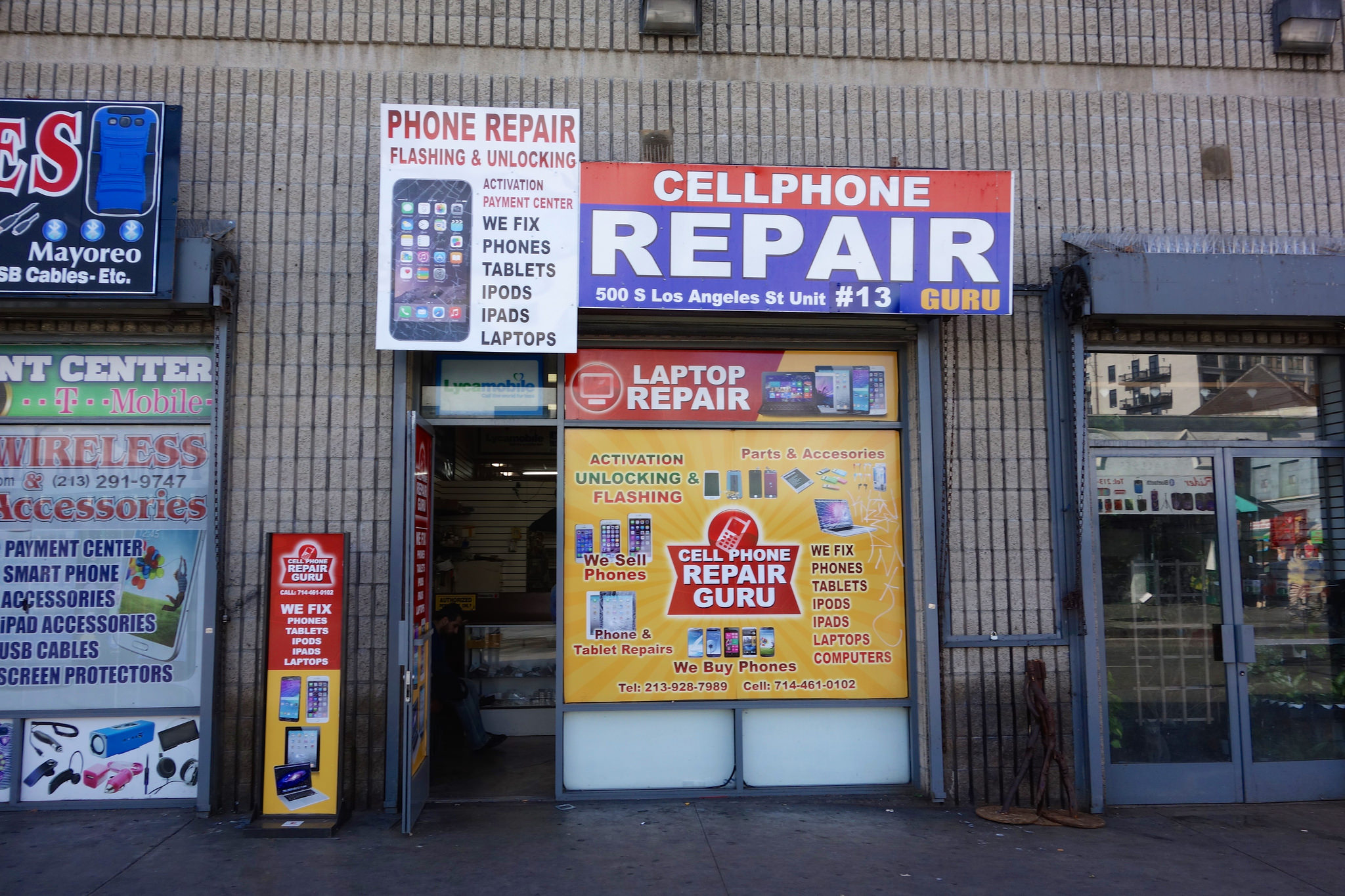
Some of the repair shops I visited in Los Angeles few weeks ago.
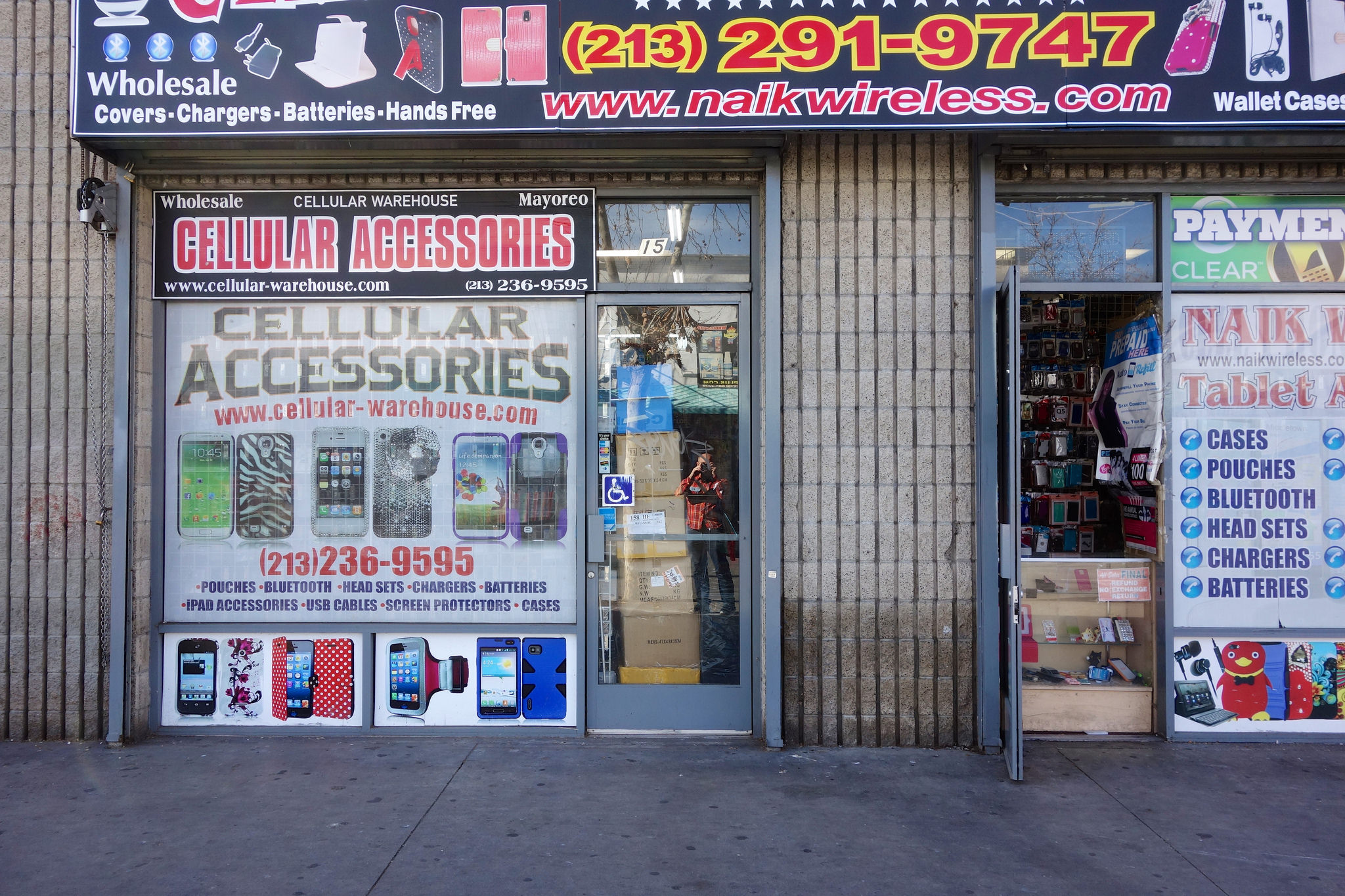
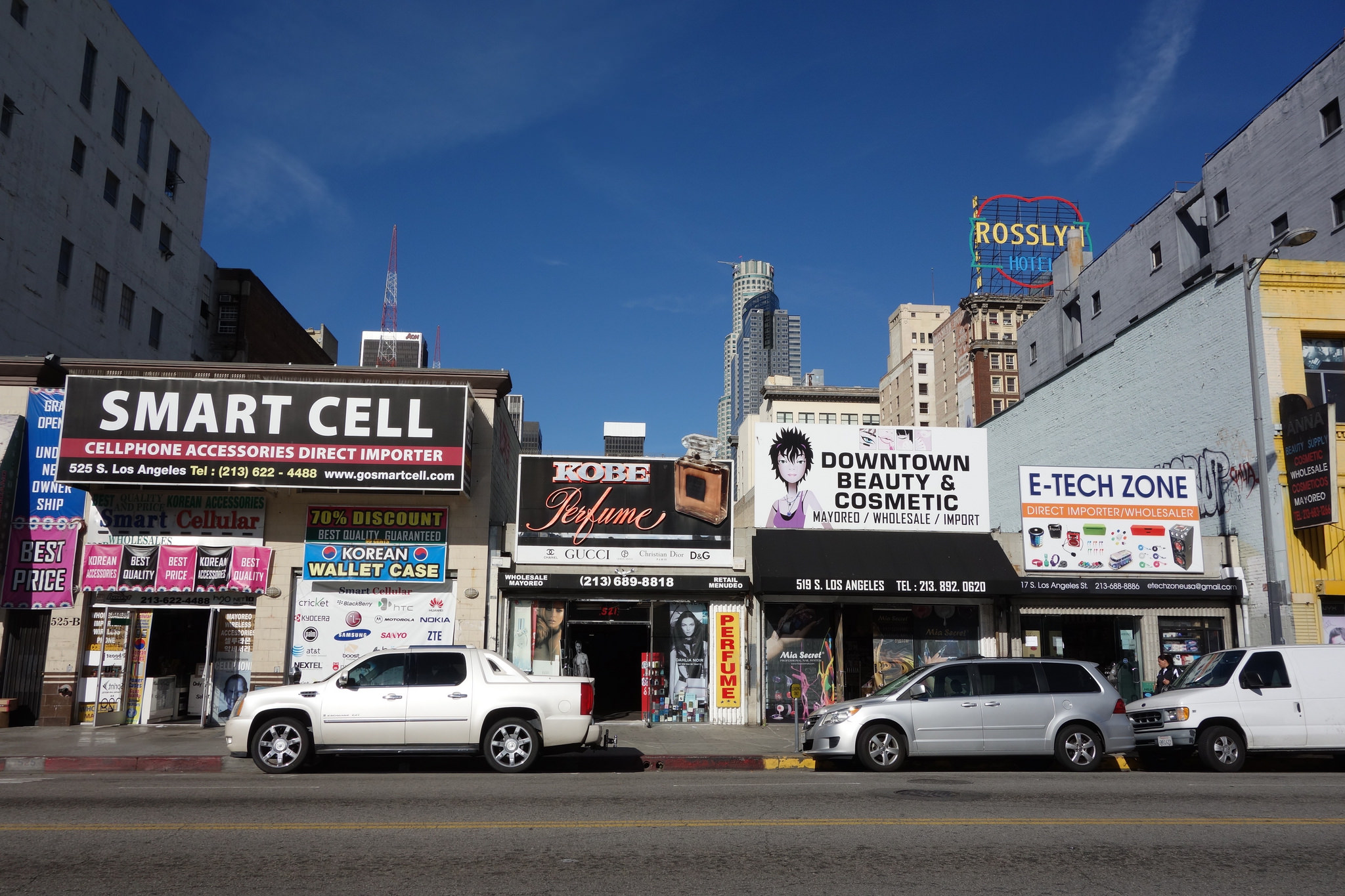
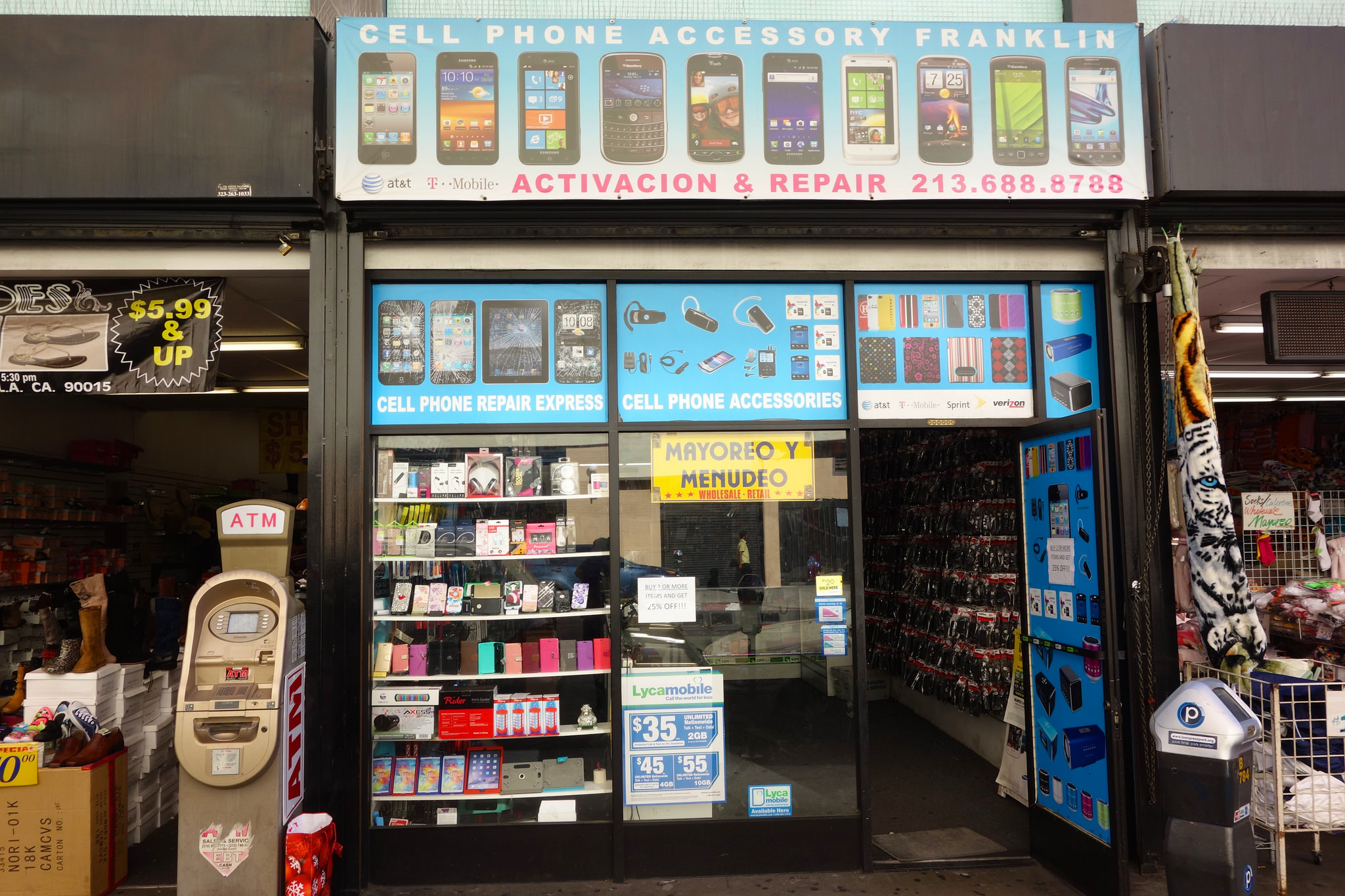
And the most intriguing is the e-cig-shop-turned-hoverboard-repair-shop:


A fascinating poster encountered few days ago in the wholesale district of Los Angeles. A very straight-forward way to indicate the evolution of objects/technologies. Let's appreciate the examples chosen by this local tech historian.
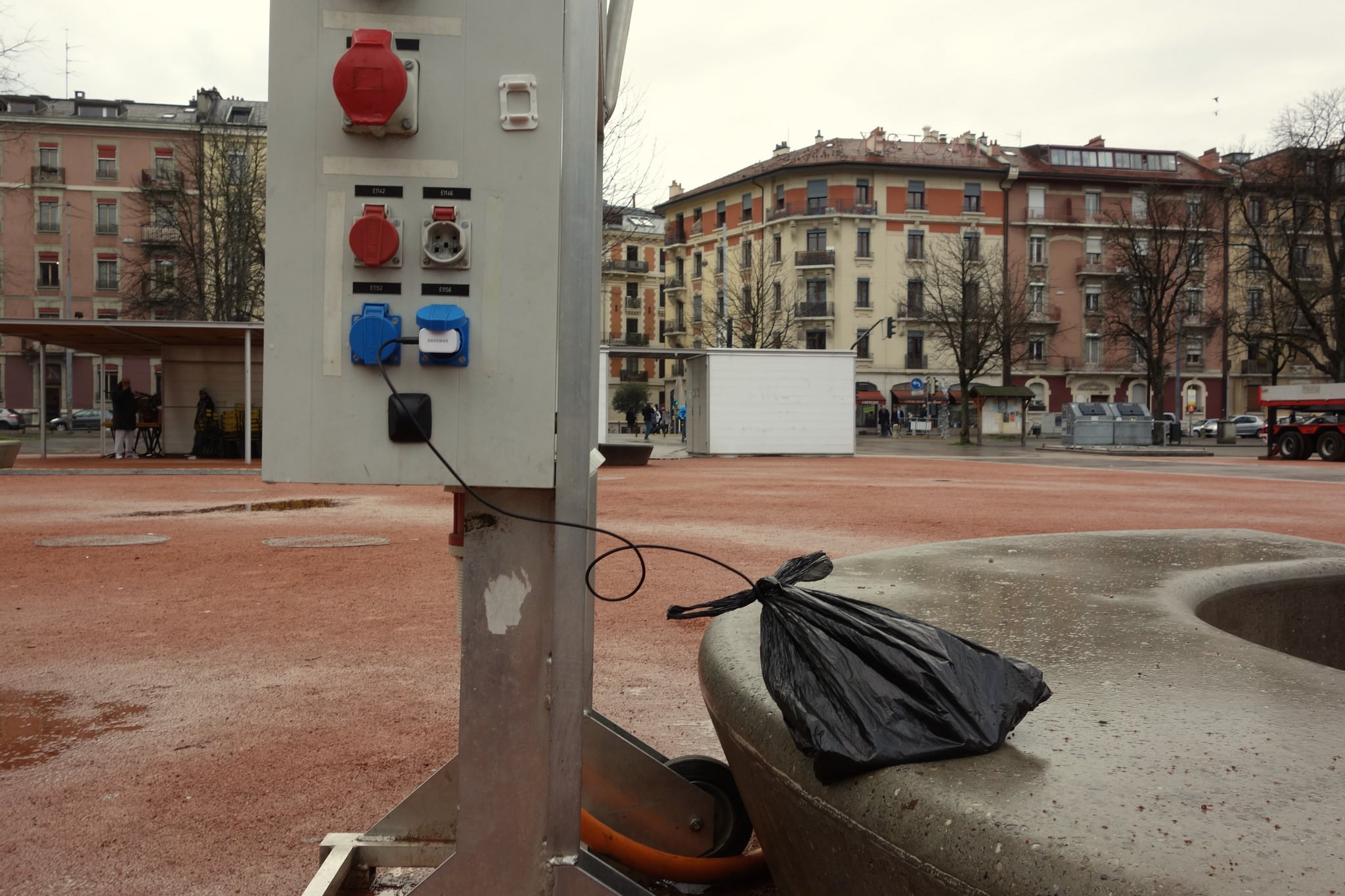
Geneva (Switzerland), December 21, 2015.
The power plugs available for the flea/farmers market in Geneva are often used by people to recharge their mobile phones. The rain sometimes prevents them from using the plugs, but some guy obviously found a protection. Interestingly, the owner, who's fifty meters away, do not seem to care much about his device, only observing it from the distance.

A wide range of pen possibilities here, found in a French convenience store. The form is the same, the affordance too, but the behavior's different. The dual pen (paper + capacitive screen) sits in the center, more expensive than the others, with a colorful look discreetly showing its edgy character.

Seen in Paris few weeks ago, a private car using the Autolib infrastructure to power up its batteries.
Why do I blog this? The need to recharge electrical objects – ranging from smartphones to cars – is more and more prevalent... and lead to such kind of behavior... reminding me of people looking for power plugs in trains (obviously toilets can help here) or in weird urban places (such as the outlets made available for farmers market owners).


Why do I blog this? Seen in the Arlanda Express in Stockholm this week, this intriguing signage is meant for an invisible interface, the (standard) automatic door which always leads perplexed user to wonder how to open it. Although I like the icons here, I had to help two persons during the trip to downtown.


The kind of wearable computing you find at the market in Geneva. It's been a while these sound-activated t-shirts exist and I find it fascinating to see them around in 2015. Future mundane at its best here.
Here’s a list of services offered in an AC-intense mobile phone repair shop in Trinidad (Cuba): "desbloqueo decodificatión y liberación de celulares, código de usuario, cambio de idioma, cambio de frecuencia, reparación de software (flasheo), reparación de celulares Chinos, reparaciones generales de hardware (display, flex, táctiles, bocinas, micrófonos, régiment de carga), eliminación de humedad a móviles, instalación de aplicaciones, actualización de sistema Android, actualización de sistema IOS, configuración del coreo nauta, información et asesoria gratuitas."
A rather broad and interesting inventory. Some of the services can generally be fond in this type of shop ((I regularly visit these stores while traveling here and there )); unlocking the SIM card and change components (speaker, microphone ...) in particular. I also understood "eliminación of humedad has móviles" is not related to the climatic constraints of moisture as one might think, but rather to the fact that many people, there as elsewhere, seems to drop the phone in the water 📱💦. The other services are less common : assistance with phone configuration (language, messaging software, update OS) or app installation. The precision concerning the Chinese mobile phone repair is obviously intriguing too.
Basically, this type of store is not very different from those I have just a few meters from my home in Geneva. However, Cuba has many other shop/counters/garage/apartment????) offering repair services for all kinds of other artifacts : for automobiles of course (from 1951 Plymouth to the latest Audi), electro-mechanical watch/clock, garden and kitchen hardware, bikes, etc.

Plastic and metal parts sold on the street in Trinidad.
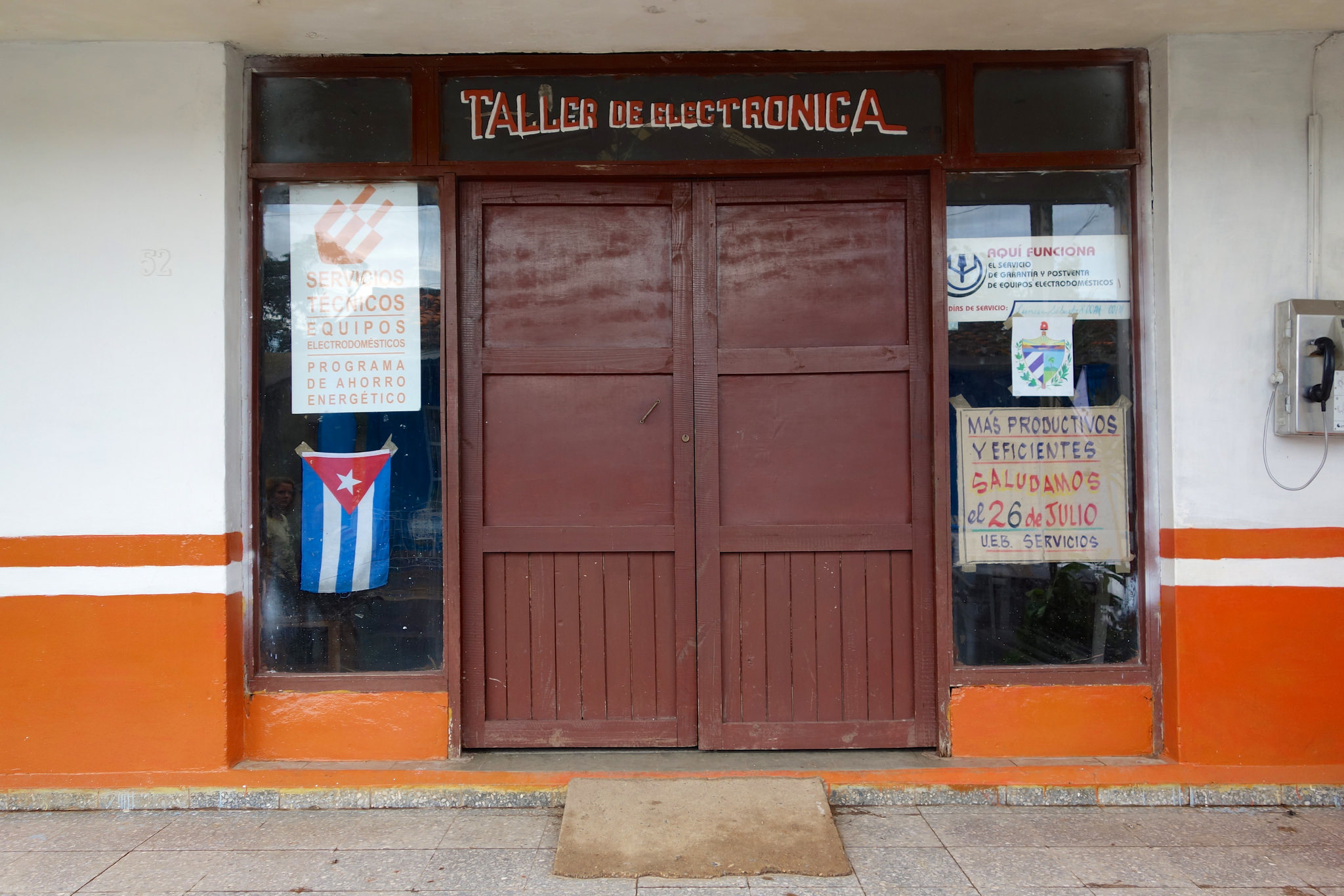
Electronic shop in Viñales.
Given the difficulty to acquire property on the island, this is not hardly a surprise, but it reflects a important“repair culture". However, unlike many titles of articles or reference guide saying that a visit to Cuba is a “frozen in time", it is a lively present. With, one the one hand, a variety of technical objects both old and new, not necrotic at all. And, on the other hand, altered artifacts, with more or less recent parts. The best example being the bicitaxi (bicycle taxi) that are certainly rudimentary at first but whose sound consists bluetooth speakers hanging on the ceiling (cardboard, metal or wood) and controlled by a smartphone (iPhone or Android ). Similarly, American cars are certainly old, but the driver may well have a bluetooth headset for phone calls, and a USB key inserted into car stereos with tons of mp3s collected in in music stores delivering content more or less fresh downloaded from the Internet (and potentially via the Paquete Semanal). The government also contribue to this, as attested by the Soviet-like toll arches on Havana highways ... on which fixed cameras read the registration plates (according to our taxi driver) in a very contemporary robot world-readable fashion. This type of arrangement is also not limited only to hardware tinkering, it is found in fact in the service of such design… with Airbnb being available for in some casa particulares (guest capita ) with a payment made through an intermediary in an agency in Miami.

A repairman in Trinidad.
Another consequence of this culture of DIY also concerns the recycling of objects, materials and spare parts from multiple devices. Some examples encountered : along with the inevitable mention of 1950s US cars, I ran across a lawn mower made up of a screw motor metal rods and a small motorcycle tank, a leaf blower assembled with a vacuum cleaner motor mounted on a leather harness and a North American switch, a Lada VAZ-2101 engine placed in the hood of a 1957 Dodge, etc. This kind of bricolage is also described by the anthropologist Sarah Hill in a fascinating article titled "Recycling History and the Never-Ending Cuban Life of Things" ... who goes into more detail on what I describe here. Without idealizing these practices, it would be intriguing to compare this practices with other recycling and repair cultures including Gambiarra described Felipe Fonseca in Brazil.

Engine from a taxi car in Habana.
Without offering the same conditions (political, social, technological and other) that the Western world, the island is far from being “frozen in the past” as I’ve seen written here and there. And one can also wonder wether this type of lively hybridization cannot be also considered as our future. It seems reasonable to think that a culture of recycling or DIY could become widespread in the Western world due to the scarcity multiple commodities / rare metals.

Some serious business going on here: a Facetime-enabled visioconference operated while walking (seen in Geneva, Switzerland). Verbal and non-verbal communication in the context of a heated debate on a subject I could not parse because of my lack of knowledge of this language.
Why do I blog this? Such situation is nonetheless utterly fascinating as a curious rituals happening these days (with or without a selfie-stick). The "private bubble" located in the public sphere in a new way with different instruments.
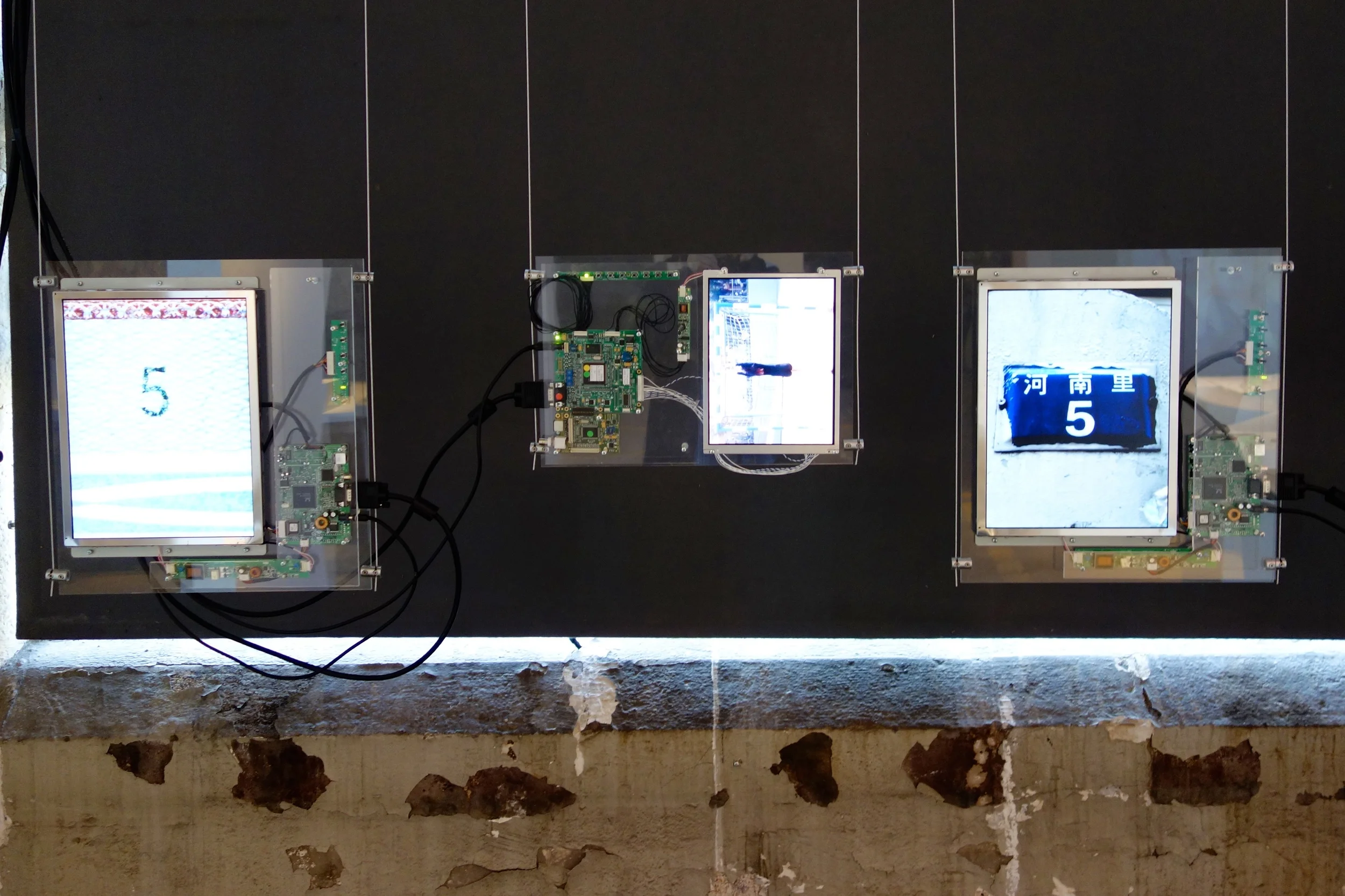
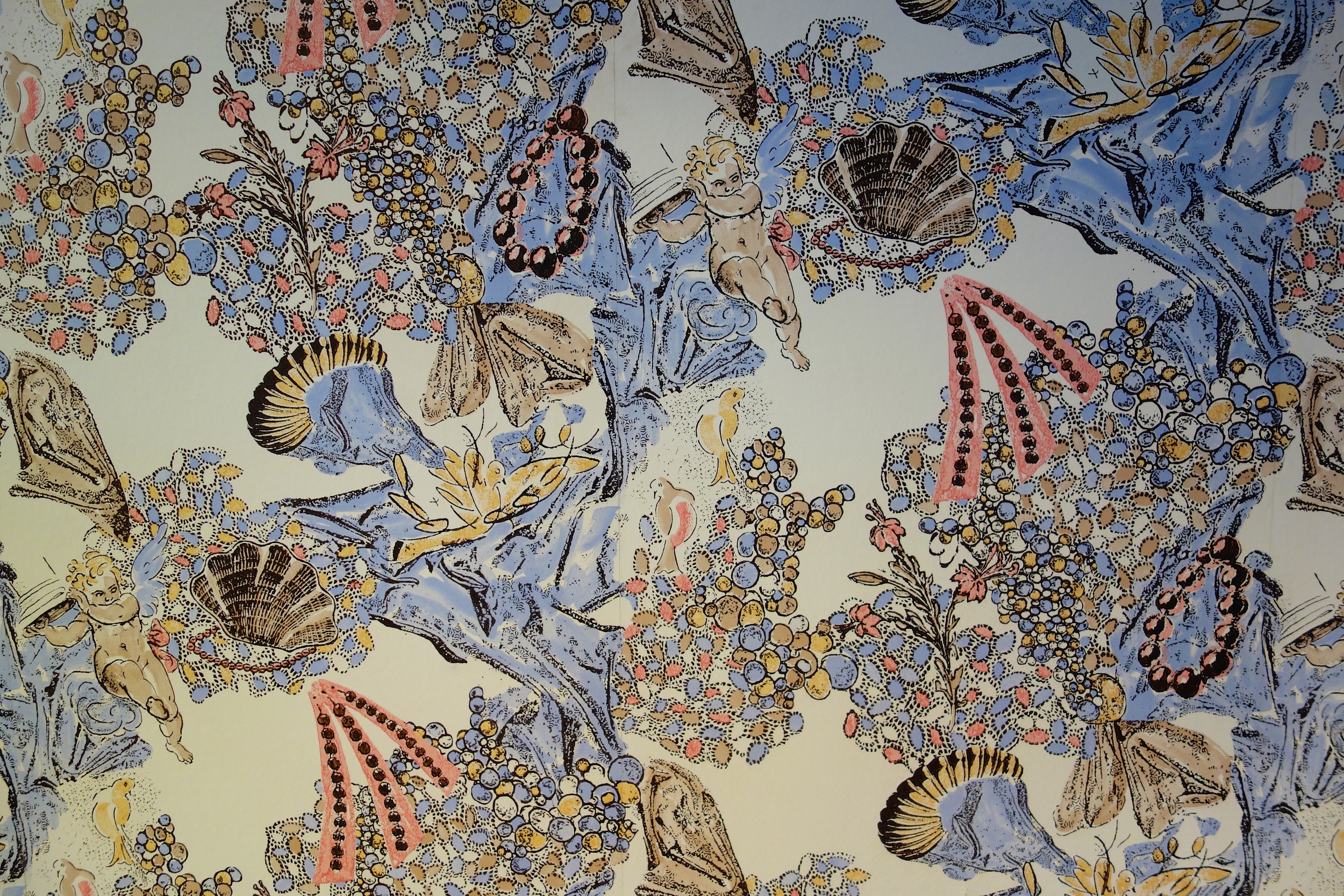








This coffee machine encountered at the University of Lausanne (thanks Olivier G. for pointing me this example) seems like an interesting example of an everyday situation reconfigured by digital technology. Apart from cash, coffee drinkers can use their RFID "campus card" (see the plastic things that hold the card on the reader), which also happens to open door and pay restaurants among other tasks:

Why do I blog this? documenting the digital everyday, as mundane as it may be.

Geneva, February 2015.
The curious gesticulation that leads to a double selfie.
Why do I blog this? I started a follow-up project to "Curious Rituals" focused on the usage of smartphones.

San Francisco, Feb. 2015
"Activate switch", "Touch to Exit", "Push to Exit", "Press to operate door": the vocabulary of doors is impressive here.

Found at supercargo.tumblr.com (by Florian Rainer)
"Supercargo: a parable of desire" by Peter Moosgaard looks like one of the most interesting tumblr I've seen in months. It's a set of pictures that highlight the evolution of material culture. I haven't seen in any textual description about it but I can't help inferring the meaning of these things. It actually feel very close to the Gothic High-Tech/Favela Chic dialectic described by Bruce Sterling (in this speech), the sort of visual equivalent to vapourwave built on the debris of the plastic/computing culture of the last 20 years... the equivalent to the cargo cult that occurred few decades ago in Melanesia as the paradigmatic metaphor of our material everyday.

(Source: fakehermes)
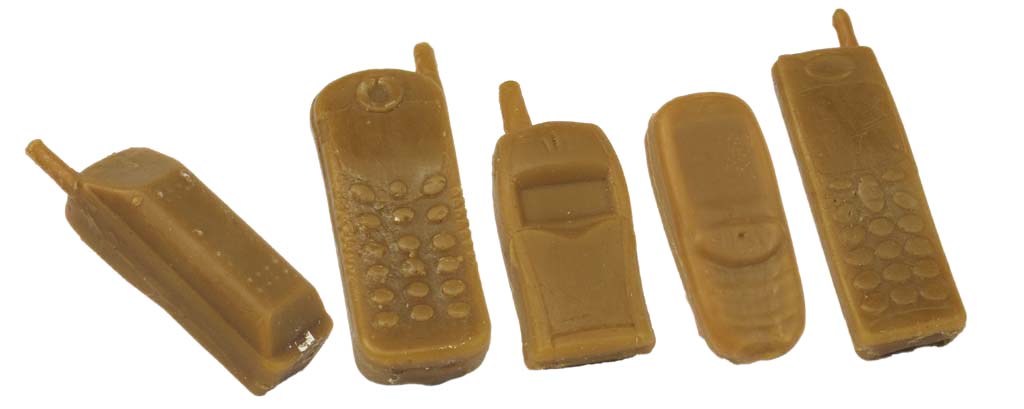
(Source: lndicium)

Why do I blog this? Collecting examples of curious projects that show the evolution of material culture is a good way to think about new typologies. These ones are particularly intriguing.
Currently at the Media design seminar here at the Geneva School of Art and Design, we discussed this interesting way to explain the notion of modularity. Called, "the parable of the two watchmakers", It's from Herbert Simon and it nicely explains the relationship of simple and complex systems (organic and social):
"There once were two watchmakers, named Hora and Tempus, who made very fine watches. The phones in their workshops rang frequently and new customers were constantly calling them. However, Hora prospered while Tempus became poorer and poorer. In the end, Tempus lost his shop. What was the reason behind this? The watches consisted of about 1000 parts each. The watches that Tempus made were designed such that, when he had to put down a partly assembled watch, it immediately fell into pieces and had to be reassembled from the basic elements. Hora had designed his watches so that he could put together sub-assemblies of about ten components each, and each sub-assembly could be put down without falling apart. Ten of these subassemblies could be put together to make a larger sub-assembly, and ten of the larger sub-assemblies constituted the whole watch."
Why do I blog this? This looks like a good way to introduce the notion of modularity, using an analogy which is understandable (as opposed to the use of fractals by other authors).
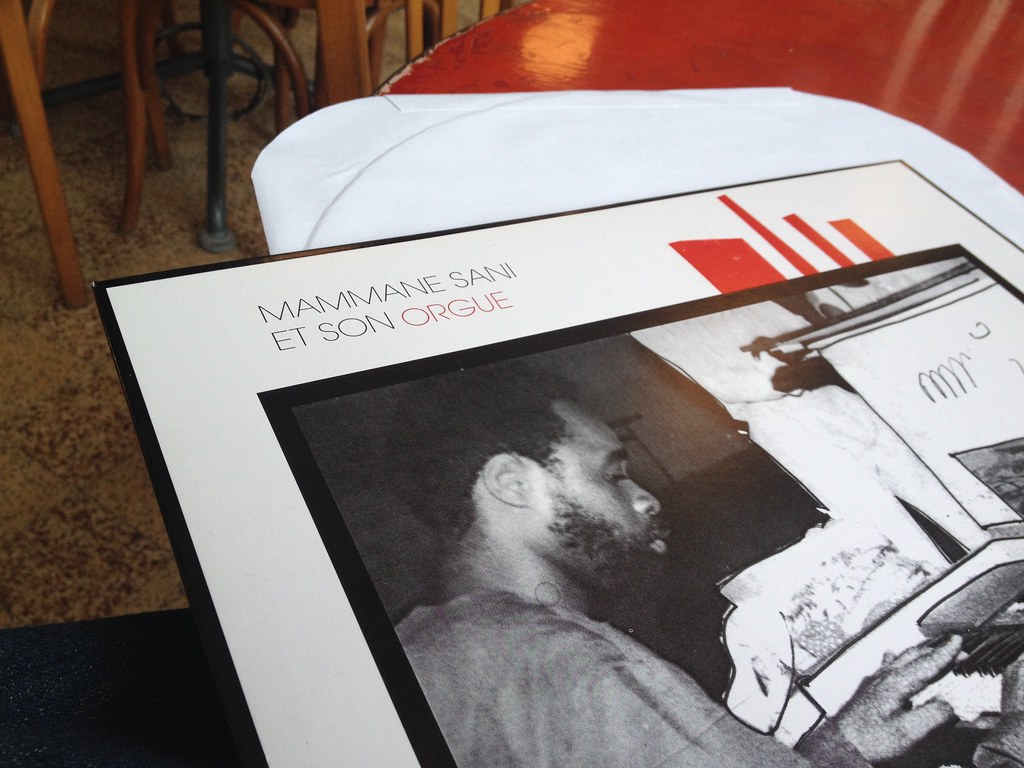 Saw that cover yesterday at Bongo Joe records, a café/record shop in Geneva. It's interesting to see that, for once, the artist AND its instrument are mentioned on the cover. "Mammane Sani et son orgue" is incredible:
Saw that cover yesterday at Bongo Joe records, a café/record shop in Geneva. It's interesting to see that, for once, the artist AND its instrument are mentioned on the cover. "Mammane Sani et son orgue" is incredible:
"Mammane Sani Abdullaye is a legendary name amongst Niger's avant garde. A pioneer of early West African electronic music, for over 30 years his instrumentals have filled the airwaves. The instrumental background drones of radio broadcasts and instrumental segue ways of TV intermissions borrow heavily from his repertoire. The dreamy organ instrumentals drift by sans comment, yet are known to all. Mammane first found the organ in 1974. "
Why do I blog this? documenting human-machine collaboration in everyday life.
 Last month, when involved in a teaching seminar in France, I ran across this utterly curious scene. It's basically a cell-phone with a piece of paper that shows a drawing, stuck on the device's display. The drawing features a sort of animal quickly scribbled.
Last month, when involved in a teaching seminar in France, I ran across this utterly curious scene. It's basically a cell-phone with a piece of paper that shows a drawing, stuck on the device's display. The drawing features a sort of animal quickly scribbled.
This is exactly the sort of artifact that I like to find in my peripheral vision. Quick drawings, paper, duct tape and a technological devices: those are the ingredients that generally leads the observer to spot a bottom-up innovation of sort. De Certeau at its best probably. Seeing this, I thought that the user of this device had a specific use for this: perhaps aesthetical (a kid's present), most likely functional.
Fortunately, the "user" of this phone was close and I had the opportunity to ask her what it meant. She told me it was a reminder. Interestingly, in French, a reminder is called "pense-bête": literally "a reminder for stupid people" but "bête" not only means "stupid", it's also a term employed for "beast". This user thus created a drawing of a small beast on a piece of paper as way to signify it's a reminder.
The thought process is clear here: the stick note is put in a convenient place (the phone display) and for both aesthetic/functional reasons, it takes the form of a piece of paper with a quick drawing. It's also stunning to see how the phone screen is used as surface to put additional information (and subsequently cover up the screen itself!).
Why do I blog this? This is a fascinating example of bottom-up creativity that corresponds to how users create their own personal (and meaningful) personal solutions in everyday life. What is important is that the phone itself supports that very same functionality (reminder/virtual stick note). However, the user preferred the use different material (paper, pen, duct-tape) to do it. This can be seen as a good example of the difference between a feature and its instantiation from the user's POV. It's not because the phone has a reminder system that it's going to be used... simply because the whole system is different and does offer the same level of personalization.